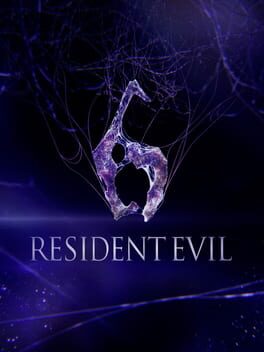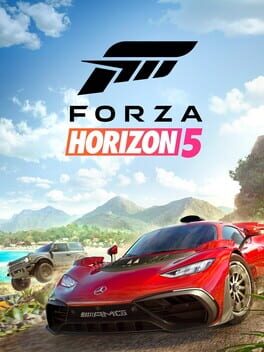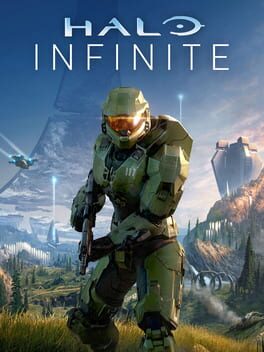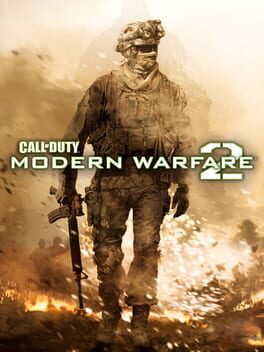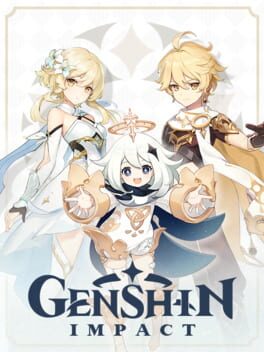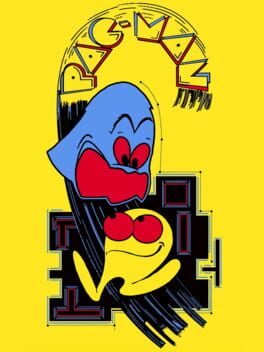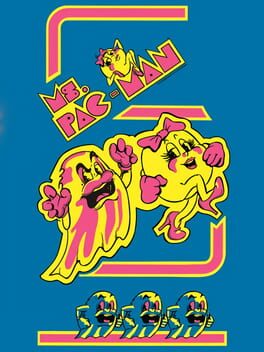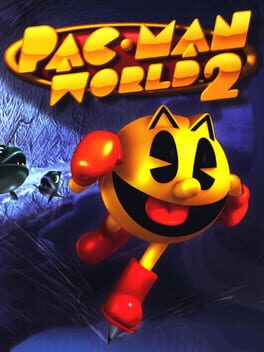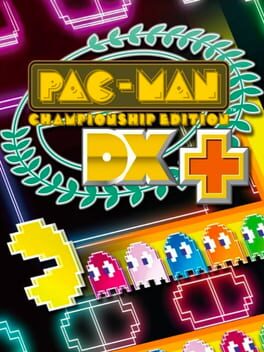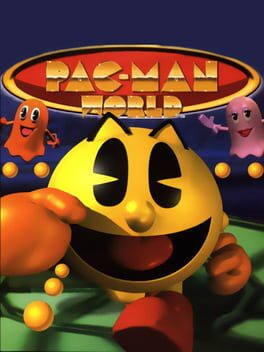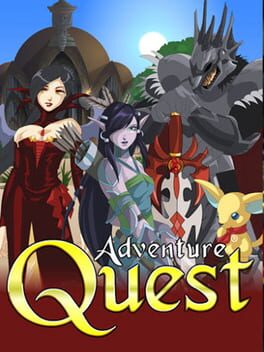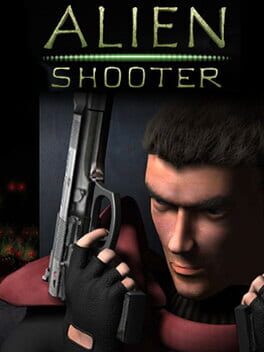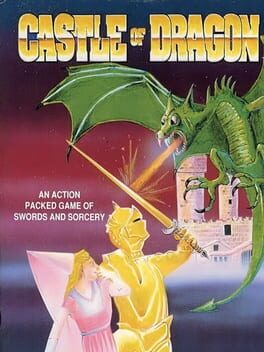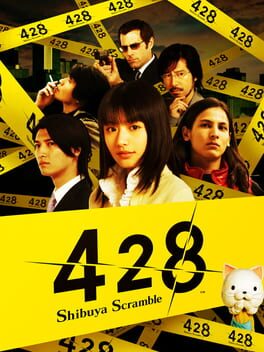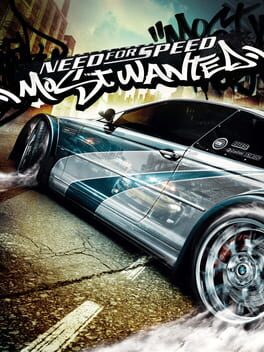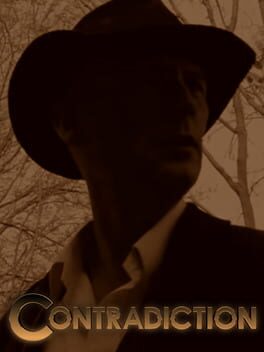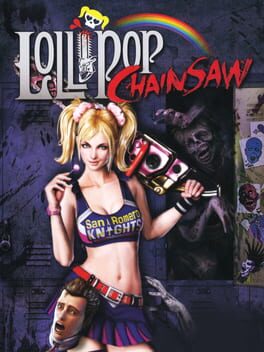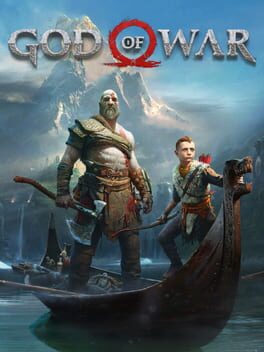SnobbishPuppet
23 reviews liked by SnobbishPuppet
Elden Ring
2022
There are few games as utterly captivating as Elden Ring. Throughout it's runtime, I found the game's world and it's dungeons just absolutely sucking up my play sessions and spitting me out on the other side, way past 11pm and wishing i didnt have work the next day. It's a hard game to drag oneself away from, with an open world that constantly rewards curiosity, enormous main dungeons which you can now have a degree of vertical exploration and platforming, and constant beauty to be found in it's locales and vistas.
The world design and the main levels of Elden Ring are just astounding. If you exclude the copypasta mines and catacombs, which fortunately arent too common, nearly everything else is high tier Fromsoftware stuff, and the world design itself is fantastic. It's kind of like New Vegas in that whilst it's very open, there's a clear route the game is always nudging you in, and the world design being much longer than it is wide ties into that. Towards the end of the game it also gladly funnels a bit more, so just as the open world fatigue feels like it might set in and the world looks like it might be overstepping, it pulls it back just enough.
The gameplay itself is basically dark souls 4, which is pretty much what everyone wanted, so cool. If there is a significant difference between them, it is that Elden Ring is a game that encourges far more resourcefulness and usage of tactics and items that were pretty useless in previous games. The item crafting allows lot more liberal use of things like firebombs and knives, crossbows and bows are massively more viable, and multiclassing a melee build with some magic is a natural path to take as scaling seems way less important than stat requirements for wepons and abilities. With spirit ashes as well there seems a fairly large emphasis on using a wider variety of resources available to you, which is a good change, and discourages the R1-roll-r1 that souls can sadly boil down to.
On a core gameplay side, the only real issue i have is the scaling of enemy health and damage. It's just a bit overtuned. Unlike other Souls games, Vitality basically has to be your primary stat here - having about 40-50(!!!) seems appropriate for the endgame, in a game where other stat demands remain basically the same compared to previous games. Enemies also get vastly inflated health pools in harder areas than where you should be, and whilst i get the purpose to sort of corral the player in the right areas, it's a bit much. It leads to coming back to early areas being a cakewalk whilst lacking a few upgrades in a lategame area to be a nightmare - something that can easily happen becasue the drops required to upgrade weapons are kind of a mess to get and you may well end up in a situation where missing one low level stone prevents a massive jump in power. Reducing this quite massive range would have helped a lot, and I don't really get why the decision was made to be like this when none of the other souls are, excluding the chalice dungeons and the New game plus cycles - which is kind of what going to a new area feels like in gameplay terms.
The bosses are also a very mixed bag. Many are great, of course, but there's some serious dark souls 2 energy to quite a couple of them - bosses with really weird wind ups that track your position to an insane degree with only tiny windows to fight back with. And worst off, very occasionally you'll get to fight two of those fuckers at once.
There's also just too many bosses in general. I know they're often the best part of these games and that since you can run past so much of everything else in this game, it might be neccessary, but there's a large amount of copypasta of the minor bosses in particular, a lot of similar dragons - and the game basically ends with 5 bosses directly after each other, which is a bit much. They could have toned it down a bit.
Other than that, perhaps the biggest dissapointment for me is the narrative and world "lore". Especially in the early hours the world of elden ring feels a bit like bootleg dark souls, to the point i dont know why they didn't just make this a direct spinoff. There's so much stuff which is just "dark souls stuff but named different" that it feels a bit fake, and wheras something like bloodborne could get away with it due to a vastly different setting, Elden Ring's really is quite similar. The conflict of the game is also quite poorly defined unless you're really paying attention to stuff. Fortunately some very good NPCs (ranni my beloved) and the world design itself rises to the occasion, but yeah, I really think they should have made this just a dark souls spinoff, it just means it feels awkward at times, especially in the early hours which are just straight, boring high fantasy.
To be honest, there's an overwhelming amount of nits to pick with Elden Ring. I could write a review much longer than this one alone about individual locations in the game that feel like they were given to the team who made shrine of amana, or the weird quest design, or wonky performances issues or whatever. But, y'know, that's From. Every last one of the souls games - and all the earlier games of theirs i've played - have problems that I would dumpster other games for. I will forever make fun of the Cathedral level from Code Vein, but you'll probably catch me defending lost izalith if you got me drunk enough. Because just the general play experience of Elden Ring is so damn strong.
It's not the best soulsbornekirofieldtowerring - the honour still goes to bloodborne by a long shot as far as i'm concerned. Ultimately i do think enough of the issues i've mentioned, particularly the wonky balance, large amounts of reused stuff and some bad bosses definetly knock the game down a peg. But it's still clearly the best open world game since Gravity Rush 2, and FROM's first crack at this really doesn't feel like the sellout my cynical self thought it would be. It's like they've been doing this all along.
The world design and the main levels of Elden Ring are just astounding. If you exclude the copypasta mines and catacombs, which fortunately arent too common, nearly everything else is high tier Fromsoftware stuff, and the world design itself is fantastic. It's kind of like New Vegas in that whilst it's very open, there's a clear route the game is always nudging you in, and the world design being much longer than it is wide ties into that. Towards the end of the game it also gladly funnels a bit more, so just as the open world fatigue feels like it might set in and the world looks like it might be overstepping, it pulls it back just enough.
The gameplay itself is basically dark souls 4, which is pretty much what everyone wanted, so cool. If there is a significant difference between them, it is that Elden Ring is a game that encourges far more resourcefulness and usage of tactics and items that were pretty useless in previous games. The item crafting allows lot more liberal use of things like firebombs and knives, crossbows and bows are massively more viable, and multiclassing a melee build with some magic is a natural path to take as scaling seems way less important than stat requirements for wepons and abilities. With spirit ashes as well there seems a fairly large emphasis on using a wider variety of resources available to you, which is a good change, and discourages the R1-roll-r1 that souls can sadly boil down to.
On a core gameplay side, the only real issue i have is the scaling of enemy health and damage. It's just a bit overtuned. Unlike other Souls games, Vitality basically has to be your primary stat here - having about 40-50(!!!) seems appropriate for the endgame, in a game where other stat demands remain basically the same compared to previous games. Enemies also get vastly inflated health pools in harder areas than where you should be, and whilst i get the purpose to sort of corral the player in the right areas, it's a bit much. It leads to coming back to early areas being a cakewalk whilst lacking a few upgrades in a lategame area to be a nightmare - something that can easily happen becasue the drops required to upgrade weapons are kind of a mess to get and you may well end up in a situation where missing one low level stone prevents a massive jump in power. Reducing this quite massive range would have helped a lot, and I don't really get why the decision was made to be like this when none of the other souls are, excluding the chalice dungeons and the New game plus cycles - which is kind of what going to a new area feels like in gameplay terms.
The bosses are also a very mixed bag. Many are great, of course, but there's some serious dark souls 2 energy to quite a couple of them - bosses with really weird wind ups that track your position to an insane degree with only tiny windows to fight back with. And worst off, very occasionally you'll get to fight two of those fuckers at once.
There's also just too many bosses in general. I know they're often the best part of these games and that since you can run past so much of everything else in this game, it might be neccessary, but there's a large amount of copypasta of the minor bosses in particular, a lot of similar dragons - and the game basically ends with 5 bosses directly after each other, which is a bit much. They could have toned it down a bit.
Other than that, perhaps the biggest dissapointment for me is the narrative and world "lore". Especially in the early hours the world of elden ring feels a bit like bootleg dark souls, to the point i dont know why they didn't just make this a direct spinoff. There's so much stuff which is just "dark souls stuff but named different" that it feels a bit fake, and wheras something like bloodborne could get away with it due to a vastly different setting, Elden Ring's really is quite similar. The conflict of the game is also quite poorly defined unless you're really paying attention to stuff. Fortunately some very good NPCs (ranni my beloved) and the world design itself rises to the occasion, but yeah, I really think they should have made this just a dark souls spinoff, it just means it feels awkward at times, especially in the early hours which are just straight, boring high fantasy.
To be honest, there's an overwhelming amount of nits to pick with Elden Ring. I could write a review much longer than this one alone about individual locations in the game that feel like they were given to the team who made shrine of amana, or the weird quest design, or wonky performances issues or whatever. But, y'know, that's From. Every last one of the souls games - and all the earlier games of theirs i've played - have problems that I would dumpster other games for. I will forever make fun of the Cathedral level from Code Vein, but you'll probably catch me defending lost izalith if you got me drunk enough. Because just the general play experience of Elden Ring is so damn strong.
It's not the best soulsbornekirofieldtowerring - the honour still goes to bloodborne by a long shot as far as i'm concerned. Ultimately i do think enough of the issues i've mentioned, particularly the wonky balance, large amounts of reused stuff and some bad bosses definetly knock the game down a peg. But it's still clearly the best open world game since Gravity Rush 2, and FROM's first crack at this really doesn't feel like the sellout my cynical self thought it would be. It's like they've been doing this all along.
Elden Ring
2022
I doubted From Software. I will be the first to admit that, after the proverbial dreg heap that was Sekiro and the reminder of how stunningly mediocre Souls games can be with the Demon’s Souls remake, I came at Elden Ring with a healthy amount of caution. The irony is that I have a deep love for From Software when they’re firing on all cylinders. While I have always been weary of the fantasy genre and the often maligned “dark fantasy” label, the world of Dark Souls speaks to me. Although I have very little appreciation for the lore present in the series, I respect the uncompromising vision that the lore follows. As a vehicle for unforgettable visuals is where the lore shines, though. I doubt anyone who has played the Dark Souls series will forget things like Sen’s Fortress, flanked by a lush forest and standing ominously as a roadblock to a city bathed in light. The Dark Souls series is filled with displays of From Software flexing their visual design muscles, proving time and again that there is no other studio who can bring such horrifically beautiful creatures and worlds to life at such high frequency. Irithyll, Anor Londo, Duke’s Archives, Yharnam, Lothric, The Fishing Hamlet and I could name at least ten more locations from these games that all came out within the same decade that are among the most breathtaking areas in any game that I’ve played. The only lore that I need is that someone built these places, and that they are no place for the speck in this world that I’m playing as. Their size frequently dwarfs your player character, reinforcing the fact that this place is hostile to you, that despite any level of undeniable beauty that still remains, that you are not welcome here.
There is comfort to this fear of the great unknown though. I was recently introduced to the works of Thomas Moran during an art history class that I’ve been taking. Moran’s career was defined by his paintings of the Grand Canyon, and his experiences there were clearly a combination of awe and unease. See, Moran was in the company of an expedition that was mapping out the American west for an industry raring to exploit it for everything it is worth. It soon became evident to these explorers that this land was too important to be tilled by big business. This importance was not due to the mineral housed within the Grand Canyon’s fertile ground, but the sheer wonder that it inspired in them. Take a look at any of his paintings, and one can see exactly why they wanted to protect this land. It feels otherworldly, like a place that is too perfect and awe-inspiring to be a physical place on earth. That feeling would be founded in the truth, because the places Moran painted are not real. Moran painted composites of the Grand Canyon area. The places he painstakingly captured cannot be visited and looked upon with the same wonder you may have imagined he did. In a way, Moran’s paintings were “propaganda” for the conservationist cause. They captured a feeling rather than a specific time and place. This feeling, although it basks you in the light of beauty that is beyond the description of prose, is also tinged with the same unease that Anor Londo might evoke. Moran felt that to prove the pricelessness of the Grand Canyon, it was not only imperative that its indescribable wonder be on full display, but also its titanic hostility. Beauty can be overlooked in the name of profit, but it’s more difficult when the unknowable wilderness lies beyond. Pictured in his most famous painting are tiny figures representing the expedition, standing like ants at the precipice of a sheer drop. Any great gust of wind or tectonic shift could send them plummeting off into certain death. Beyond, on the horizon is a thunderous waterfall. It is fantastical and alluring, but god help you if you get caught in its uncaring flow. I want to be there, standing next to the explorers and even going out into the painted world, but at the same time I feel my fragility pang. From Software has distilled the essence of Moran’s paintings down to a concentrated formula. The worlds they create are three dimensional recreations of this feeling strung together in a barrelling journey toward more and more danger. They are anxiety filled trips to places that are constantly out to hurt you and make you feel true, unrelenting fear. The fear that all the progress you made through this world will suddenly be halted by something insurmountable. Something that has seen a thousand people like you, and disposed of them like any of the birds or unclothed zombies that you dash past. Despite the danger and confusion and seemingly endless unfair obstacles that these games are defined by, they hold some allure with us. We keep bashing our heads against these walls because they are walls that are splendid to look at.
Elden Ring is an embarrassment of beautiful walls. It feels like a scavenger hunt where around every corner a new Moran painting lies in wait. Breath of the Wild hid shrines around the world, but everyone knew that the real reward was the intrinsic joy of finding an abandoned temple embedded with sleeping guardians. It was scaling a mountain you’ve seen in the distance for the last five hours, reaching the top, and seeing that not only do dragons exist in this world, but there’s one right in front of you. Elden Ring is like Breath of the Wild if every shrine was replaced with a dragon at the top of a mountain. At every turn there is a mine filled with stone-skinned humanoids wholly concerned with stripping away the gem laden walls, or a ravine that ends in a climb through scaffolding and jutting cliffs with a magma spewing wyrm guarding its peak, or a castle just as intricate as the best Dark Souls levels taunting you with its grandeur. Everything here taunts you. Elephant sized wolves that can murder you in one fell swoop taunt you in the same way Moran taunted everyone who looked upon his paintings. It’s a dare that no matter how dangerous they can make something, we will always edge closer to it to get a better look at its grotesque beauty. It’s the dare that, my 10,000 souls be damned, you will platform through treacherous ramparts of a castle in disrepair to see what lies at the end. Elden Ring taunts me constantly, and its rewards are greater than 10,000 or 100,000 souls or runes or whatever they’re called now. All I know is that I should have never doubted From Software’s propensity to allure me with venomous curiosity.
There is comfort to this fear of the great unknown though. I was recently introduced to the works of Thomas Moran during an art history class that I’ve been taking. Moran’s career was defined by his paintings of the Grand Canyon, and his experiences there were clearly a combination of awe and unease. See, Moran was in the company of an expedition that was mapping out the American west for an industry raring to exploit it for everything it is worth. It soon became evident to these explorers that this land was too important to be tilled by big business. This importance was not due to the mineral housed within the Grand Canyon’s fertile ground, but the sheer wonder that it inspired in them. Take a look at any of his paintings, and one can see exactly why they wanted to protect this land. It feels otherworldly, like a place that is too perfect and awe-inspiring to be a physical place on earth. That feeling would be founded in the truth, because the places Moran painted are not real. Moran painted composites of the Grand Canyon area. The places he painstakingly captured cannot be visited and looked upon with the same wonder you may have imagined he did. In a way, Moran’s paintings were “propaganda” for the conservationist cause. They captured a feeling rather than a specific time and place. This feeling, although it basks you in the light of beauty that is beyond the description of prose, is also tinged with the same unease that Anor Londo might evoke. Moran felt that to prove the pricelessness of the Grand Canyon, it was not only imperative that its indescribable wonder be on full display, but also its titanic hostility. Beauty can be overlooked in the name of profit, but it’s more difficult when the unknowable wilderness lies beyond. Pictured in his most famous painting are tiny figures representing the expedition, standing like ants at the precipice of a sheer drop. Any great gust of wind or tectonic shift could send them plummeting off into certain death. Beyond, on the horizon is a thunderous waterfall. It is fantastical and alluring, but god help you if you get caught in its uncaring flow. I want to be there, standing next to the explorers and even going out into the painted world, but at the same time I feel my fragility pang. From Software has distilled the essence of Moran’s paintings down to a concentrated formula. The worlds they create are three dimensional recreations of this feeling strung together in a barrelling journey toward more and more danger. They are anxiety filled trips to places that are constantly out to hurt you and make you feel true, unrelenting fear. The fear that all the progress you made through this world will suddenly be halted by something insurmountable. Something that has seen a thousand people like you, and disposed of them like any of the birds or unclothed zombies that you dash past. Despite the danger and confusion and seemingly endless unfair obstacles that these games are defined by, they hold some allure with us. We keep bashing our heads against these walls because they are walls that are splendid to look at.
Elden Ring is an embarrassment of beautiful walls. It feels like a scavenger hunt where around every corner a new Moran painting lies in wait. Breath of the Wild hid shrines around the world, but everyone knew that the real reward was the intrinsic joy of finding an abandoned temple embedded with sleeping guardians. It was scaling a mountain you’ve seen in the distance for the last five hours, reaching the top, and seeing that not only do dragons exist in this world, but there’s one right in front of you. Elden Ring is like Breath of the Wild if every shrine was replaced with a dragon at the top of a mountain. At every turn there is a mine filled with stone-skinned humanoids wholly concerned with stripping away the gem laden walls, or a ravine that ends in a climb through scaffolding and jutting cliffs with a magma spewing wyrm guarding its peak, or a castle just as intricate as the best Dark Souls levels taunting you with its grandeur. Everything here taunts you. Elephant sized wolves that can murder you in one fell swoop taunt you in the same way Moran taunted everyone who looked upon his paintings. It’s a dare that no matter how dangerous they can make something, we will always edge closer to it to get a better look at its grotesque beauty. It’s the dare that, my 10,000 souls be damned, you will platform through treacherous ramparts of a castle in disrepair to see what lies at the end. Elden Ring taunts me constantly, and its rewards are greater than 10,000 or 100,000 souls or runes or whatever they’re called now. All I know is that I should have never doubted From Software’s propensity to allure me with venomous curiosity.
Resident Evil 6
2012
Resident Evil 6 is the theater of goop.
Here be the sludge that stirs across the surface! Imagine not being able to tell the difference between tar and honey ?
"What's good for you is good for me."
This is not a rehabilitation letter. Six will be buried if necessary, never to be talked of again now that we've got another virus on our hand. New alphabet ; one Wesker for a Birkin. Turncoat Redfields, fake Adas but more importantly, hot people. People on topic, at the cutting edge of any given threat. Videogame protagonists for videogame times, with three fingers on the trigger while a glance back affords us a little breather. It's still our franchise, right sir ? Biohazard moves forward because Resident Evil never can.
Two things have been sitting at the back of my mind while playing this mess : On the one hand you have the release of Resident Evil 4's HD Project 1.0 version - a work of restoration so thorough that Jacob Geller already dedicated a whole video to it - and on the other you've got swirling reports of CAPCOM's very own attempt to resurrect the golden child once again by (among other things) drawing inspiration from the infamous 2003 castle demo. I'm excited. Curious! A little chained to the peerless promise of next-gen frights ; man with hook is the verb, an absurdly new one to wield in this here place and house. It's like we're circumventing the whole Village just to go back to the source material. Modernity is overrated anyway and I want my cookie moody instead of soaked in the era of greys and beiges - but what greys and beiges! See the thing about Resident Evil 4 is that I don't want to play it again. It's cliché to call something modern, especially within the context of a specular videogame canon, but Four is the Shit and everyone knows it. It's just that blatant. Now what we do with that notion is at our own discretion but the fact is this rift no one has been able to close ever since. Of course I'd wanna be back there, spoil the ancestors. Resident Evil is not "special". But we like it enough to have turned the monster into a cultural touchstone. I see the stone and it's oozing sludge. I touch it and the wet grips me. Let us all recess in this pandemic together. I have never been more invested in discovering the refreshed polygon count of a dog in my whole life.
Sometimes this craze - this hopelessness, really - pushes me to reevaluate things in a pseudo-scholarly gesture of boredom. My brain is inherently wired to go down rabbit-holes, draw cosmic lines of meaning between points of interests that don't even intersect at the most obscure of angles ; and sometimes the line leads me to take patience with a title and meet it on its own terms completely. Embrace the fire and awkwardly march towards my own doom. Welcome to Racoon City 6.
There's an ugliness at play that is key (I think) to share some sort of commonality with a game like Resident Evil 6. I don't mean basking in a rotten decor or giggling at the prospect of seeing the burning car rolling-on down the hill. This I don't care about - bad is important and insightful but ultimately I'm a sucker for beauty and grace. When I use the term "ugly" to describe Resident Evil 6 I mean it not in the aesthetic sense but as an "aesthetical marker", better yet an "aesthetical touchstone" of the material. Because the words that kept popping back in my head as I fucked around this globe of bioweapons were Michael Benjamin Bay. The glory of Bay's entire body of work has always lied in how ugly his film were. They're cynical, nihilistic, nothing-of-a-project ideas envisioned as pornographical and commercial in nature. Bay is a storyteller - a damn fine one at that - but he is also a fundamental nonbeliever. Because of the formless ideological void that shapes his stories some of his most potent visual ideas often don't mesh well with each other and end up resonating more strongly across separate films (this is why his disregard for bodily sanctity has never been more vibrant than in Transformers or how the upcoming dream that is Ambulance looks to be one of his most syncretic works yet). In the eyes of Bay, our earthly decor has long been an anti-matter for humans where only his gaze deems objects and shapes worthy of examination. And of course to him, serpentine camera motions and explosions are the only lifeforms worth maintaining in the end. An America for the people, without the people.
"No Hope Left" is the tagline of Resident Evil 6 through and through. Everything about it is guided by this thematic zeitgeist, pushing our heroes to go through the motions of a game that can't stop, won't stop. Ever. Six's economy is watered-down, uninterested in subtle mood swings. It's relentless. Always on a "have some more attitude" and unwilling to part with that drive for the sake of play conventions. Hence it's impossible to view it as a singular suite or some supersized block of ideas because to do so would require some type of body-beacon to illuminate the reason of its existence. A humane garble that would cut through the horde ; or put it another way, what Ed Smith once referred to as "the headshot". Resident Evil 6 is profoundly, explicitly anti-headshot, not just from a gameplay standpoint but also from an ideological perspective. This world is a hydra-state that solely follows the flow of bullets from one country to the next. Any attempt to make a narrative out of this conflict fails once you realize the game exists in this persistent state of in-medias res, the kind where every second is spent in disbelief of what the developers decided to throw at you. I play Resident Evil 6 and ask myself "How ?"
That is not the mark of mediocrity, that's just a dog chewing at its own leg and liking it.
But anyway, a world without people, without zombies, really, without monsters even - or without time to properly explore their effects on a consistent metagame. The lifeforms that CAPCOM deems worthy of exploration here are harder to identify than in any other title in the series. Leon's campaign, for example, does a decent job of setting up this framework of bravado - slipping and sliding and kicking interwoven by bouts of excellent QTE work - I'd hoped would be further expanded later only to be thrown off the deep end by Chris and the boys. Only Resident Evil 6 would be so foolish (so brave) as to orchestrate close-quarters rocket battles...I hate this campaign, because it's the one that gets the closest to this idea of "bad" I referred to earlier. Nothing can be gained from its furious exchanges, every encounter deserving of a crass and finicky dissection no one would walk away from with their sanity intact. Like drigo said to me one evening "It's impossible to tell whether or not they thought about [any given idea] for longer than 5 min." This is the theme of Resident Evil 6 more than anything else, and it occasionally leads to beautiful meanderings into what I call this theater of goop.
Goop is mush. It's fluid, indistinct but mostly is the state of games with an ambivalent bond to genre. Attachment to genre is the reason of Six's whole identity crisis because its understanding of the word is so gleefully malleable, as if 600 employees at CAPCOM deduced that ambiance only consisted of shadows on the wall and Nemesis could just be airdropped into warzones unscathed (as if this "space" had nothing to do with “those” bodies). Genre is when an object with this many ambitions is so aggressively "of the market" by way of gesturing to western audiences while imagining that it could be anything other than profoundly "Resident Evil". There's no easy answer here ; Six doesn't lend itself to any kind of catharsis, even ten years later, passionately playing it does not assuage the shortcomings of its mechanics/level-design in the face of king shit like Resident Evil 4 even as its highest highs invoke a sense of return to Spain - not by way of knife-play this time but through a kick-and-slide metagame that, if it could, would reject any notion of the necessity of firearms to fight bioterrorism - while its many artistic inconsistencies prevent me from loving it from afar. This theater has no sense of place tying the frame to some shared space with the player ; no stage upon which to string ourselves along or spectatorship at hand to reassure us, there's just the linear play, the consistency of our need for business in the face of explosions that run mud-caked in radioactive blacks and yellows. Resident Evil 6 can't be denied.
Leave exhausted or don't come at all.
In the absence of resolution, I'll make up my own lie.
I think I have an idea of what this game is and it all comes from a very specific point in Jake and Sherry's campaign I like to call the four doors of the Ustanak.
The four doors of the Ustanak are a set of precisely 4 (four!) metallic military-grade doors you need to open with your partner one after the other at the end of a chase with our resident Nemesis. Throughout Six doors are a huge component of the environment, whether bashed-through with a partner or careful half-opened in anticipation of the next threat. But this set is special. You go through each one of these thresholds - themselves divided in a two-part ritual, first unlocking the valve and then opening and closing the door behind us - only to find yourself in the presence of another one of Chekhov's gun - here taking the form of a huge drill-tractor which we promptly hijack in order to retaliate. What ensues is one of my favorite moments of the game as Jake and Sherry proceed to ram the Ustanak through each of the doors in reverse order all the way to mountain rock. Beyond the absolute insanity of making us go through four successive instances of Quick-time-event handywork as if drunk on its contraptions I think this sequence holds the key to understanding just how much the game wishes to be noticed and engaged with at the most basic level of play, repeating patterns to better nuke them out in front of our eyes. It’s not so much the individual chain of motions composing it that endeared me but rather their absurd repetition, the belief that this was what the game required at this point in time and space. Contrary to Bay this ugliness at work is exactly what draws the game away from cynicism and into unknown territories ; whereas he makes engines of fatigue that serve the disintegration of everything human in his frame, Resident Evil 6 is pushed forward by this notion that aesthetic destruction will make a live beast out of moments of desperation.
Leon and its companions are not actors of their own lives - and neither are we there - but Six offers the distant possibility that maybe, just maybe, if one keeps on kicking and sliding in this world where every door is screaming and death-drive feels indistinguishable from survival we could be heard someday, somehow.
Helluva manifesto this.
Here be the sludge that stirs across the surface! Imagine not being able to tell the difference between tar and honey ?
"What's good for you is good for me."
This is not a rehabilitation letter. Six will be buried if necessary, never to be talked of again now that we've got another virus on our hand. New alphabet ; one Wesker for a Birkin. Turncoat Redfields, fake Adas but more importantly, hot people. People on topic, at the cutting edge of any given threat. Videogame protagonists for videogame times, with three fingers on the trigger while a glance back affords us a little breather. It's still our franchise, right sir ? Biohazard moves forward because Resident Evil never can.
Two things have been sitting at the back of my mind while playing this mess : On the one hand you have the release of Resident Evil 4's HD Project 1.0 version - a work of restoration so thorough that Jacob Geller already dedicated a whole video to it - and on the other you've got swirling reports of CAPCOM's very own attempt to resurrect the golden child once again by (among other things) drawing inspiration from the infamous 2003 castle demo. I'm excited. Curious! A little chained to the peerless promise of next-gen frights ; man with hook is the verb, an absurdly new one to wield in this here place and house. It's like we're circumventing the whole Village just to go back to the source material. Modernity is overrated anyway and I want my cookie moody instead of soaked in the era of greys and beiges - but what greys and beiges! See the thing about Resident Evil 4 is that I don't want to play it again. It's cliché to call something modern, especially within the context of a specular videogame canon, but Four is the Shit and everyone knows it. It's just that blatant. Now what we do with that notion is at our own discretion but the fact is this rift no one has been able to close ever since. Of course I'd wanna be back there, spoil the ancestors. Resident Evil is not "special". But we like it enough to have turned the monster into a cultural touchstone. I see the stone and it's oozing sludge. I touch it and the wet grips me. Let us all recess in this pandemic together. I have never been more invested in discovering the refreshed polygon count of a dog in my whole life.
Sometimes this craze - this hopelessness, really - pushes me to reevaluate things in a pseudo-scholarly gesture of boredom. My brain is inherently wired to go down rabbit-holes, draw cosmic lines of meaning between points of interests that don't even intersect at the most obscure of angles ; and sometimes the line leads me to take patience with a title and meet it on its own terms completely. Embrace the fire and awkwardly march towards my own doom. Welcome to Racoon City 6.
There's an ugliness at play that is key (I think) to share some sort of commonality with a game like Resident Evil 6. I don't mean basking in a rotten decor or giggling at the prospect of seeing the burning car rolling-on down the hill. This I don't care about - bad is important and insightful but ultimately I'm a sucker for beauty and grace. When I use the term "ugly" to describe Resident Evil 6 I mean it not in the aesthetic sense but as an "aesthetical marker", better yet an "aesthetical touchstone" of the material. Because the words that kept popping back in my head as I fucked around this globe of bioweapons were Michael Benjamin Bay. The glory of Bay's entire body of work has always lied in how ugly his film were. They're cynical, nihilistic, nothing-of-a-project ideas envisioned as pornographical and commercial in nature. Bay is a storyteller - a damn fine one at that - but he is also a fundamental nonbeliever. Because of the formless ideological void that shapes his stories some of his most potent visual ideas often don't mesh well with each other and end up resonating more strongly across separate films (this is why his disregard for bodily sanctity has never been more vibrant than in Transformers or how the upcoming dream that is Ambulance looks to be one of his most syncretic works yet). In the eyes of Bay, our earthly decor has long been an anti-matter for humans where only his gaze deems objects and shapes worthy of examination. And of course to him, serpentine camera motions and explosions are the only lifeforms worth maintaining in the end. An America for the people, without the people.
"No Hope Left" is the tagline of Resident Evil 6 through and through. Everything about it is guided by this thematic zeitgeist, pushing our heroes to go through the motions of a game that can't stop, won't stop. Ever. Six's economy is watered-down, uninterested in subtle mood swings. It's relentless. Always on a "have some more attitude" and unwilling to part with that drive for the sake of play conventions. Hence it's impossible to view it as a singular suite or some supersized block of ideas because to do so would require some type of body-beacon to illuminate the reason of its existence. A humane garble that would cut through the horde ; or put it another way, what Ed Smith once referred to as "the headshot". Resident Evil 6 is profoundly, explicitly anti-headshot, not just from a gameplay standpoint but also from an ideological perspective. This world is a hydra-state that solely follows the flow of bullets from one country to the next. Any attempt to make a narrative out of this conflict fails once you realize the game exists in this persistent state of in-medias res, the kind where every second is spent in disbelief of what the developers decided to throw at you. I play Resident Evil 6 and ask myself "How ?"
That is not the mark of mediocrity, that's just a dog chewing at its own leg and liking it.
But anyway, a world without people, without zombies, really, without monsters even - or without time to properly explore their effects on a consistent metagame. The lifeforms that CAPCOM deems worthy of exploration here are harder to identify than in any other title in the series. Leon's campaign, for example, does a decent job of setting up this framework of bravado - slipping and sliding and kicking interwoven by bouts of excellent QTE work - I'd hoped would be further expanded later only to be thrown off the deep end by Chris and the boys. Only Resident Evil 6 would be so foolish (so brave) as to orchestrate close-quarters rocket battles...I hate this campaign, because it's the one that gets the closest to this idea of "bad" I referred to earlier. Nothing can be gained from its furious exchanges, every encounter deserving of a crass and finicky dissection no one would walk away from with their sanity intact. Like drigo said to me one evening "It's impossible to tell whether or not they thought about [any given idea] for longer than 5 min." This is the theme of Resident Evil 6 more than anything else, and it occasionally leads to beautiful meanderings into what I call this theater of goop.
Goop is mush. It's fluid, indistinct but mostly is the state of games with an ambivalent bond to genre. Attachment to genre is the reason of Six's whole identity crisis because its understanding of the word is so gleefully malleable, as if 600 employees at CAPCOM deduced that ambiance only consisted of shadows on the wall and Nemesis could just be airdropped into warzones unscathed (as if this "space" had nothing to do with “those” bodies). Genre is when an object with this many ambitions is so aggressively "of the market" by way of gesturing to western audiences while imagining that it could be anything other than profoundly "Resident Evil". There's no easy answer here ; Six doesn't lend itself to any kind of catharsis, even ten years later, passionately playing it does not assuage the shortcomings of its mechanics/level-design in the face of king shit like Resident Evil 4 even as its highest highs invoke a sense of return to Spain - not by way of knife-play this time but through a kick-and-slide metagame that, if it could, would reject any notion of the necessity of firearms to fight bioterrorism - while its many artistic inconsistencies prevent me from loving it from afar. This theater has no sense of place tying the frame to some shared space with the player ; no stage upon which to string ourselves along or spectatorship at hand to reassure us, there's just the linear play, the consistency of our need for business in the face of explosions that run mud-caked in radioactive blacks and yellows. Resident Evil 6 can't be denied.
Leave exhausted or don't come at all.
In the absence of resolution, I'll make up my own lie.
I think I have an idea of what this game is and it all comes from a very specific point in Jake and Sherry's campaign I like to call the four doors of the Ustanak.
The four doors of the Ustanak are a set of precisely 4 (four!) metallic military-grade doors you need to open with your partner one after the other at the end of a chase with our resident Nemesis. Throughout Six doors are a huge component of the environment, whether bashed-through with a partner or careful half-opened in anticipation of the next threat. But this set is special. You go through each one of these thresholds - themselves divided in a two-part ritual, first unlocking the valve and then opening and closing the door behind us - only to find yourself in the presence of another one of Chekhov's gun - here taking the form of a huge drill-tractor which we promptly hijack in order to retaliate. What ensues is one of my favorite moments of the game as Jake and Sherry proceed to ram the Ustanak through each of the doors in reverse order all the way to mountain rock. Beyond the absolute insanity of making us go through four successive instances of Quick-time-event handywork as if drunk on its contraptions I think this sequence holds the key to understanding just how much the game wishes to be noticed and engaged with at the most basic level of play, repeating patterns to better nuke them out in front of our eyes. It’s not so much the individual chain of motions composing it that endeared me but rather their absurd repetition, the belief that this was what the game required at this point in time and space. Contrary to Bay this ugliness at work is exactly what draws the game away from cynicism and into unknown territories ; whereas he makes engines of fatigue that serve the disintegration of everything human in his frame, Resident Evil 6 is pushed forward by this notion that aesthetic destruction will make a live beast out of moments of desperation.
Leon and its companions are not actors of their own lives - and neither are we there - but Six offers the distant possibility that maybe, just maybe, if one keeps on kicking and sliding in this world where every door is screaming and death-drive feels indistinguishable from survival we could be heard someday, somehow.
Helluva manifesto this.
Forza Horizon 5
2021
Fun enough core driving and a great open world to mess around in, but everything about its presentation from its story and characters, terrible UI, constantly flashing XP meters and level ups, annoying retention mechanics, AI issues like rampant rubberbanding, and irritating locked down scripted setpiece moments that ultimately don't offer anything interesting or new to the actual driving make this kind of actively exhausting to play.
Astro's Playroom
2020
One of the most heartwarming introductions to experience that I can think of, packed to the brim with a love and passion for this entire ridiculous art sphere. Smiles from onset to sunset, and couldn't put it down until I had seen every bit of sony's paraphernalia and explored the entire marketing scape. Really the only hard pill to swallow is simply how with every single gutteral squeal I had to seeing stuff like Patapon and Jumping Flash!, I couldn't help but think about how most of the studio who delivered this to every child and introductory player to the PS5 was laid off and sent elsewhere. It never quite feels like a final hurrah, but entirely an excitement for what's to come. This really gives it a sort of invisible sorrow in the backdrop to wrestle with if it's at or near the forefront of your attention.
I do owe myself to go back, down the path of history it set out and celebrate/check out Japan Studio and Asobi's catalog. To an extent maybe this can be the idea coming forward, even if you don't recognize a lot of the references you see here it's very clear how charming and suffused with appreciation they are. Maybe that'll set more people on that path. One can hope!
I do owe myself to go back, down the path of history it set out and celebrate/check out Japan Studio and Asobi's catalog. To an extent maybe this can be the idea coming forward, even if you don't recognize a lot of the references you see here it's very clear how charming and suffused with appreciation they are. Maybe that'll set more people on that path. One can hope!
Halo Infinite
2021
Fans of Halo and Street Fighter have a lot in common - put ten of them in a room, and you'll get ten different opinions on what the best game in the franchise is.
I think the game you like the most from a franchise is a function of time and place rather than quality and content. I'm a diehard for Street Fighter III: 3rd Strike, and it's undoubtedly because it's the one I played a ton of it on the original Xbox with my friends in the year following Daigo's straight-finessed blowup of EVO 2004; if I'd come to it cold-turkey on a Fightcade emulator in 2017 or whatever, I doubt the game would be able to hold me at all, despite its inherent 2D magic. I can look past its flaws - of which there are quite a few - because they're being covered up by falling rose petals of epic parries and hard-won comebacks.
Halo 3 is my favourite Halo game - exquisite graphics, a solid weapon roster, a campaign full of memorable "epic" moments and a flawless "it just works" multiplayer mode that highlighted every new strength of the Xbox 360. I played it religiously in the dying days of my teenage years, when time was plenty and money was scarce and I could give a good game the respect it deserved. With Halo 3, I couldn't have asked for more - it's been 14 years now, and I can still remember specific moments in time from that game like I'm watching them in Theater Mode in the present.
Ask the older boys on my hometown street what the best Halo game is, and they'd probably yearn for the perfect simplicity of the Halo: Combat Evolved pistol play, or champion the revolutionary nature of Halo 2's dual-wielding dual-protagonists and never-done-before online play. My old work colleagues might advocate for Halo Reach's gut-wrenching, grit-writhing story or the inclusion of cherry-picked gameplay elements from the juggernaut that was early-2010s Call of Duty (I thought that Reach was my favourite Halo, but replaying it in the Master Chief Collection revealed that the game's attempt to be a COD-contemporary has curdled it like blue space milk). Some jazz-loving freaks who read the Halo books might even try to convince you that ODST was The One. And someone, somewhere, is no doubt extolling the virtues of Halo 4 and Halo 5 - though it ain't me, nor anyone who I can find on Backloggd. They're definitely out there, though. Like the Street Fighter fans who swear down that EX 3 was the best one.
These subjective perceptions of Halo's appeal is why a Halo with the title Infinite was always gonna be an impossible ring for any game developer to jump through. It kinda feels like Halo Infinite has always existed as a sort of back-handed joke and a cack-handed game; a seventh-generation relic from a bygone era of shooters, hopelessly playing catchup with Fortnite, Apex Legends, and its old rival, Call of Duty. Infinite's botched reception last year was, of course, downright cruel - but also emblematic of how players have come to regard post-Reach Halo: a franchise that can no longer please anyone.
After a few days of Halo Infinite's multiplayer, I think it's safe to say that they somehow found a way to please everyone across 20 years of Halo history. It's funny - most people I've played with so far have a Halo backstory that they wanna share with their fireteam - "Oh, I really liked Halo 3..." ; "hmm I think my last one was 4?" ; "Yeah they added sliding in Halo 5, it was pretty cool." ; and so on - but no matter their origin story, my headset usually lights up with plenty "AWW YEAH"s and "AWW FUCK YEAH"s within a minute or two of the Slaying getting underway.
I'm not sure what it is exactly that's working for everyone, but Infinite seems to be this very delicate blend of every Halo that came before - there's the power items from 3, the sprinting from 4, the armor stuff from Reach, the out-there soundtrack decisions of ODST (overwrought Mogwai/Imagine Dragons post-rock for Halo is a cool choice imo) - but none of it takes centre-stage in a dominant, overbearing way. It just feels good to be a spaceguy with a spacegun and drive a spaceship. The classic Halo shit, with a little bit of Quake III and Unreal Tournament's item spawning thrown in for good measure this time - could Infinite fill that wafer-thin market slice that's been crying out for a new arena shooter? One that doesn't involve dying every 10 seconds to guys who've been playing every day since 1999? Anything but another ADS military shooter, please.
For me, the mark of a good multiplayer game is that even repeated death is fun - and repeatedly running in fear from an xX_Xx-tagged pro gamer Spartan with a gravity hammer prompts just as many "HAHAH OH SHIT!! DUDE" moments as getting a killstreak with a Ghost does. 343 may have rediscovered the essential Halo energy that permeated the Bungie entries.
... In multiplayer, at least. It does feel a little weird to heap praise on what is essentially a glamorous beta test for the online mode. I know nothing at all about the campaign, apart from the fact it's some huge Halo of the Wild open world thing with Master Chief going back to the halo rings yet again. I will probably play it, get bored of following waypoints and climbing towers, and then put it back on the shelf - such is the power of GamePass Gaming! But I could see myself sticking around for Infinite's multiplayer - god knows I'll have to if I ever wanna unlock anything.
I think the game you like the most from a franchise is a function of time and place rather than quality and content. I'm a diehard for Street Fighter III: 3rd Strike, and it's undoubtedly because it's the one I played a ton of it on the original Xbox with my friends in the year following Daigo's straight-finessed blowup of EVO 2004; if I'd come to it cold-turkey on a Fightcade emulator in 2017 or whatever, I doubt the game would be able to hold me at all, despite its inherent 2D magic. I can look past its flaws - of which there are quite a few - because they're being covered up by falling rose petals of epic parries and hard-won comebacks.
Halo 3 is my favourite Halo game - exquisite graphics, a solid weapon roster, a campaign full of memorable "epic" moments and a flawless "it just works" multiplayer mode that highlighted every new strength of the Xbox 360. I played it religiously in the dying days of my teenage years, when time was plenty and money was scarce and I could give a good game the respect it deserved. With Halo 3, I couldn't have asked for more - it's been 14 years now, and I can still remember specific moments in time from that game like I'm watching them in Theater Mode in the present.
Ask the older boys on my hometown street what the best Halo game is, and they'd probably yearn for the perfect simplicity of the Halo: Combat Evolved pistol play, or champion the revolutionary nature of Halo 2's dual-wielding dual-protagonists and never-done-before online play. My old work colleagues might advocate for Halo Reach's gut-wrenching, grit-writhing story or the inclusion of cherry-picked gameplay elements from the juggernaut that was early-2010s Call of Duty (I thought that Reach was my favourite Halo, but replaying it in the Master Chief Collection revealed that the game's attempt to be a COD-contemporary has curdled it like blue space milk). Some jazz-loving freaks who read the Halo books might even try to convince you that ODST was The One. And someone, somewhere, is no doubt extolling the virtues of Halo 4 and Halo 5 - though it ain't me, nor anyone who I can find on Backloggd. They're definitely out there, though. Like the Street Fighter fans who swear down that EX 3 was the best one.
These subjective perceptions of Halo's appeal is why a Halo with the title Infinite was always gonna be an impossible ring for any game developer to jump through. It kinda feels like Halo Infinite has always existed as a sort of back-handed joke and a cack-handed game; a seventh-generation relic from a bygone era of shooters, hopelessly playing catchup with Fortnite, Apex Legends, and its old rival, Call of Duty. Infinite's botched reception last year was, of course, downright cruel - but also emblematic of how players have come to regard post-Reach Halo: a franchise that can no longer please anyone.
After a few days of Halo Infinite's multiplayer, I think it's safe to say that they somehow found a way to please everyone across 20 years of Halo history. It's funny - most people I've played with so far have a Halo backstory that they wanna share with their fireteam - "Oh, I really liked Halo 3..." ; "hmm I think my last one was 4?" ; "Yeah they added sliding in Halo 5, it was pretty cool." ; and so on - but no matter their origin story, my headset usually lights up with plenty "AWW YEAH"s and "AWW FUCK YEAH"s within a minute or two of the Slaying getting underway.
I'm not sure what it is exactly that's working for everyone, but Infinite seems to be this very delicate blend of every Halo that came before - there's the power items from 3, the sprinting from 4, the armor stuff from Reach, the out-there soundtrack decisions of ODST (overwrought Mogwai/Imagine Dragons post-rock for Halo is a cool choice imo) - but none of it takes centre-stage in a dominant, overbearing way. It just feels good to be a spaceguy with a spacegun and drive a spaceship. The classic Halo shit, with a little bit of Quake III and Unreal Tournament's item spawning thrown in for good measure this time - could Infinite fill that wafer-thin market slice that's been crying out for a new arena shooter? One that doesn't involve dying every 10 seconds to guys who've been playing every day since 1999? Anything but another ADS military shooter, please.
For me, the mark of a good multiplayer game is that even repeated death is fun - and repeatedly running in fear from an xX_Xx-tagged pro gamer Spartan with a gravity hammer prompts just as many "HAHAH OH SHIT!! DUDE" moments as getting a killstreak with a Ghost does. 343 may have rediscovered the essential Halo energy that permeated the Bungie entries.
... In multiplayer, at least. It does feel a little weird to heap praise on what is essentially a glamorous beta test for the online mode. I know nothing at all about the campaign, apart from the fact it's some huge Halo of the Wild open world thing with Master Chief going back to the halo rings yet again. I will probably play it, get bored of following waypoints and climbing towers, and then put it back on the shelf - such is the power of GamePass Gaming! But I could see myself sticking around for Infinite's multiplayer - god knows I'll have to if I ever wanna unlock anything.
Never particularly been a fan of the 'tactical' cover shooter systems old games like this use. Focusing on crouching down behind cover to keep your weapon's hilarious gamble of a spread tight, moving slowly to get accurate shots on enemies that don't have remotely decent pathing to feel satisfying. Weapons do each have their own system of accuracy that keeps them viable but things don't really feel good to do unless you're mowing enemies down in bursts (provided the spread is kind to you).
Level design utilizes some of its strengths to make dickish ambushes on you and I was moderately impressed with how much it stayed true to its aesthetic. Highlights including crypt traps and closing the doors on you, and bonus points for slowly opening doors that keep you stuck in the encounter.
All that being said, wasn't particularly engaged and I probably wouldn't have even touched this game were it not for the game club that chose this for the month. Certainly could do with worse!
Don't really have a good chance to try the multiplayer but I've heard good things there. Can't say I'm interested but there's plenty there.
Level design utilizes some of its strengths to make dickish ambushes on you and I was moderately impressed with how much it stayed true to its aesthetic. Highlights including crypt traps and closing the doors on you, and bonus points for slowly opening doors that keep you stuck in the encounter.
All that being said, wasn't particularly engaged and I probably wouldn't have even touched this game were it not for the game club that chose this for the month. Certainly could do with worse!
Don't really have a good chance to try the multiplayer but I've heard good things there. Can't say I'm interested but there's plenty there.
I've said a lot of times elsewhere that this is pretty much the Bad Boys II of games, but that's not exactly true. For one it's not even close to as good as Bad Boys II, nor does it have the same degree of genuine nihilism for people in completely muted and brutal discontent. And honestly I tend to steer clear of nihilistic works so what would I really be saying there? But the big modicum of truth there is that MW2, for all its ills it brought to the rest of the CoD franchise as the biggest tone turning point in the series after WaW, is the strongest encapsulation of Michael Bay in the medium.
On a surface level that's clearly true, with just every mission working at a breakneck pace between explosion-laid action sequences with a whole cast of bro-team unlikeable jerks peaking at the end in a suicide mission with a captain of war crimes and a cleaning tool. It's almost completely rancid, having its infamous massacre be a gratuitous controversy generator as well as a main strike for its core conflict. In these ways it fully emulates that violent and heavy narrative scape Michael Bay's movies constantly demonstrate, with the real lack of love for anything humanity included. I don't say this as a bad thing either, and I do mean to say that MW2 is fully genuine in a lot of parts too. Probably the most memorable and visually striking part of the game is when the EMP blows, and you're simply forced to move through a completely quiet destroyed area of all the Washington DC iconography, with only the gunfire and debris muting your footsteps.
It's wildly memorable from start to finish, with nary a mission I can't completely walk through fully in my mind, and honestly I don't have one I really dislike much either. The gameplay beneath the stuff I praise here though is nothing special. I'm pushing that MW2 punches above its weight somewhat by accident but I'm not going to throw my body to the fire that is general stop and pop. I think in a few missions it gets some matching hype mileage out of particular gimmicks, especially the snowmobile section, but it's fairly malaise. The developers are somewhat knowledgeable of this to where most of the ops missions you get afterward are more gimmicky but they're not that interesting I'd argue either, and generally the most forgettable part of the whole experience.
But the multiplayer lives on another plane of reality altogether. It's pure condensed fucking mayhem. It's extremely unbalanced complete trash with extraordinarily busted options and hilariously uneven map design. And it's my favorite multiplayer of all of the series entirely for that reason. When everyone else is using disgusting trash the pretense of seriousness is fully gone, the assumptions of what a shooter or multiplayer should be are gone, and instead everyone devolves into that mayhem. The era of MW2 dominating machinima and elsewhere was a real wonderful moment of complete monkey craziness, culminating in MOM GET THE CAMERA.
Ok I've waxed enough prose on MW2 I just think that the period of calling it when COD went to shit or an extremely inferior work to MW1 gets on my nerves. Weird reason to write this I suppose but I think MW2's accidents are the most interesting thing about it, and also why it's so timeless.
On a surface level that's clearly true, with just every mission working at a breakneck pace between explosion-laid action sequences with a whole cast of bro-team unlikeable jerks peaking at the end in a suicide mission with a captain of war crimes and a cleaning tool. It's almost completely rancid, having its infamous massacre be a gratuitous controversy generator as well as a main strike for its core conflict. In these ways it fully emulates that violent and heavy narrative scape Michael Bay's movies constantly demonstrate, with the real lack of love for anything humanity included. I don't say this as a bad thing either, and I do mean to say that MW2 is fully genuine in a lot of parts too. Probably the most memorable and visually striking part of the game is when the EMP blows, and you're simply forced to move through a completely quiet destroyed area of all the Washington DC iconography, with only the gunfire and debris muting your footsteps.
It's wildly memorable from start to finish, with nary a mission I can't completely walk through fully in my mind, and honestly I don't have one I really dislike much either. The gameplay beneath the stuff I praise here though is nothing special. I'm pushing that MW2 punches above its weight somewhat by accident but I'm not going to throw my body to the fire that is general stop and pop. I think in a few missions it gets some matching hype mileage out of particular gimmicks, especially the snowmobile section, but it's fairly malaise. The developers are somewhat knowledgeable of this to where most of the ops missions you get afterward are more gimmicky but they're not that interesting I'd argue either, and generally the most forgettable part of the whole experience.
But the multiplayer lives on another plane of reality altogether. It's pure condensed fucking mayhem. It's extremely unbalanced complete trash with extraordinarily busted options and hilariously uneven map design. And it's my favorite multiplayer of all of the series entirely for that reason. When everyone else is using disgusting trash the pretense of seriousness is fully gone, the assumptions of what a shooter or multiplayer should be are gone, and instead everyone devolves into that mayhem. The era of MW2 dominating machinima and elsewhere was a real wonderful moment of complete monkey craziness, culminating in MOM GET THE CAMERA.
Ok I've waxed enough prose on MW2 I just think that the period of calling it when COD went to shit or an extremely inferior work to MW1 gets on my nerves. Weird reason to write this I suppose but I think MW2's accidents are the most interesting thing about it, and also why it's so timeless.
Genshin Impact
2020
As a disclaimer, I didn’t finish the game. I got to the 5th region with about 40 hours clocked (felt longer) and the last boss I beat was Ryomen.
I enjoyed the concept of Nioh 1, but Nioh 2 actually hooked me in for a while. The good qualities of the combat stood out a lot more, the weapons were more complex, the enemies felt better balanced, and the yokai form was far more exciting than the living weapon. It helped that the game had a really nice character creator to boot, and a decent bit of QoL.
Unfortunately, the game’s fatal flaw to me is just how unambitious it is. It is a game that decided from the get-go that it only seeks to do what Nioh 1 did, but a little better, and nothing else. It has decided on a formula for its enemies and level design, and it sticks to it like superglue, promising to never bring anything new and exciting to the table.
But first, lemme talk about what I liked.
I mainly fucked around with the three weapons that were added to Nioh 2 (Fists, Scythe, Splitstaff), I found a lot to like in their movesets with many attack and movement options that play well into the ki pulse and stance switch system of Nioh 1. My favorite of these was the Fists, which had a unique mechanic that actually leveraged Nioh’s RPG inspirations for cool gameplay.
The Fists allowed me to cancel special attacks into each other in order to gain a stack of a buff. At first the main appeal is the fact that this lets you string some combos with great reward, but the more interesting aspect is managing the buff. The more stacks I have, the faster the buff runs out, the buff’s timer that can be slowed down with a ki-pulse or reset completely by gaining another stack of the buff (by doing another special cancel). And since choosing to special cancel means I have to forgo ki-pulsing, there are ever higher risks to maintaining the buff, forcing me to be incredibly fast and decisive in my gameplay to maintain it while also not running out of stamina. It’s a mechanic that adds a really nice spin to Nioh’s fundamentals by giving you a reason not to ki pulse, and leveraging it well was a real adrenaline rush.
On the enemy side, I enjoyed how much more manageable attacks were in this game, everything felt really fair to me. I especially enjoy the variety of defensive options and how there is a valid reason to use all of them. High stance dodges give more i-frames, but with more recovery and stamina cost than low/mid stance dodges. Guarding is a real defensive option in this game worth using against many quick attacks, but loses to slower attacks that are meant to be avoided, and using guard to get out of hitstun is a really good mechanic that plays into the ki management that is core to Nioh. There is a lot to think about just playing defensively in this game.
Despite the awful bloat that surrounds the game’s menus and its poorly implemented RPG aspects, I had a good amount of fun with this game...initially. Things started to fall apart when the game started to show its monotony after the difficulty bump of its third mission and began to settle into a formula.
Nioh 1 was notorious for its issues with enemy variety, a complaint that Nioh 2 very much attempts to respond to. However, in their response I feel like they have failed to solve the core of the issue. The game introduces a good variety of enemies, but said enemies are never designed in a particularly inventive way, and don’t force me to engage with the systems differently, usually just bringing a host of slightly different melee attacks to the table, with maybe one projectile.
That’s the problem on a micro level, but on a macro level, an even bigger problem is the game’s never changing encounter design. Nioh 2 seems to have decided on five-ish types of encounters. Ones involving human enemies, some involving groups of small demons, some with two big demons, or one big demon paired with a couple small ones, and variations of those involving some archers in the back. Which big demon or small demon it chooses to bring this time was usually different, but the encounters played fundamentally the same. The game has many enemy types, but it never escapes the mold of its rote encounter design, and even if they wanted to, I feel like the “standardness” of their enemies limits how creative they can be as few of them feel made for synergy with other enemies or level design.
The mechanics themselves also began to reveal issues. A minor annoyance I want to mention is how much of the game’s movesets seem to be tailored around fighting human enemies, with many moves being literally unusable against enemies who can’t be grabbed/tackled, and can’t guard. This makes the game’s abundance of demon encounters to be one of the less fun parts of the game.
But the human encounters too, began to break apart. As I became comfortable with ki-pulsing and stance switching to keep my aggression up, the enemies were never able to catch up. Once their ki was downed, it was very easy to keep it down and the human boss encounters, which were previously the best parts of the game, became incredibly trivial. Enemies began to practically kill themselves with big attacks that expend large chunks of their stamina, and once I start my rushdown they can’t really recover and usually get stunlocked to death. If human enemies fully regen’d stamina after a knockdown, or if the game was better at balancing its values, this could have been avoided. Human group encounters would normally avoid this problem, but never seemed to evolve in the number and types of enemies they mix.
It doesn’t help how boring the game’s texture is, mechanics aside. The new locations and bosses the game brings me to are never particularly cool. The level design felt always by the numbers, its “souls-like" looping shortcuts were rudimentary. It felt like the game was determined to never wow me, and I was playing solely for the thrill of its combat which was starting to lose its lustre. If I was a history nerd, maybe I would have got something out of the narrative, but that ain’t me.
When my experience with this game was ending, I had fought 3 bosses in a row whom I killed on my first attempt. The game’s levels stopped bringing anything challenging or exciting. In an attempt to remedy this, I tried to stop doing the side missions and play underleveled. Another two bosses go down, both on the first try. And then I reach a new region, severely underleveled. I start to die, but not in a fun way. The enemies are still the same, the encounters are still the same, but their health values were bloated and most of their attacks one shot me. The game’s RPG aspects came through to finish it off. And with that, I dropped Nioh 2, wishing it aspired to be more than just a sequel to Nioh 1.
I enjoyed the concept of Nioh 1, but Nioh 2 actually hooked me in for a while. The good qualities of the combat stood out a lot more, the weapons were more complex, the enemies felt better balanced, and the yokai form was far more exciting than the living weapon. It helped that the game had a really nice character creator to boot, and a decent bit of QoL.
Unfortunately, the game’s fatal flaw to me is just how unambitious it is. It is a game that decided from the get-go that it only seeks to do what Nioh 1 did, but a little better, and nothing else. It has decided on a formula for its enemies and level design, and it sticks to it like superglue, promising to never bring anything new and exciting to the table.
But first, lemme talk about what I liked.
I mainly fucked around with the three weapons that were added to Nioh 2 (Fists, Scythe, Splitstaff), I found a lot to like in their movesets with many attack and movement options that play well into the ki pulse and stance switch system of Nioh 1. My favorite of these was the Fists, which had a unique mechanic that actually leveraged Nioh’s RPG inspirations for cool gameplay.
The Fists allowed me to cancel special attacks into each other in order to gain a stack of a buff. At first the main appeal is the fact that this lets you string some combos with great reward, but the more interesting aspect is managing the buff. The more stacks I have, the faster the buff runs out, the buff’s timer that can be slowed down with a ki-pulse or reset completely by gaining another stack of the buff (by doing another special cancel). And since choosing to special cancel means I have to forgo ki-pulsing, there are ever higher risks to maintaining the buff, forcing me to be incredibly fast and decisive in my gameplay to maintain it while also not running out of stamina. It’s a mechanic that adds a really nice spin to Nioh’s fundamentals by giving you a reason not to ki pulse, and leveraging it well was a real adrenaline rush.
On the enemy side, I enjoyed how much more manageable attacks were in this game, everything felt really fair to me. I especially enjoy the variety of defensive options and how there is a valid reason to use all of them. High stance dodges give more i-frames, but with more recovery and stamina cost than low/mid stance dodges. Guarding is a real defensive option in this game worth using against many quick attacks, but loses to slower attacks that are meant to be avoided, and using guard to get out of hitstun is a really good mechanic that plays into the ki management that is core to Nioh. There is a lot to think about just playing defensively in this game.
Despite the awful bloat that surrounds the game’s menus and its poorly implemented RPG aspects, I had a good amount of fun with this game...initially. Things started to fall apart when the game started to show its monotony after the difficulty bump of its third mission and began to settle into a formula.
Nioh 1 was notorious for its issues with enemy variety, a complaint that Nioh 2 very much attempts to respond to. However, in their response I feel like they have failed to solve the core of the issue. The game introduces a good variety of enemies, but said enemies are never designed in a particularly inventive way, and don’t force me to engage with the systems differently, usually just bringing a host of slightly different melee attacks to the table, with maybe one projectile.
That’s the problem on a micro level, but on a macro level, an even bigger problem is the game’s never changing encounter design. Nioh 2 seems to have decided on five-ish types of encounters. Ones involving human enemies, some involving groups of small demons, some with two big demons, or one big demon paired with a couple small ones, and variations of those involving some archers in the back. Which big demon or small demon it chooses to bring this time was usually different, but the encounters played fundamentally the same. The game has many enemy types, but it never escapes the mold of its rote encounter design, and even if they wanted to, I feel like the “standardness” of their enemies limits how creative they can be as few of them feel made for synergy with other enemies or level design.
The mechanics themselves also began to reveal issues. A minor annoyance I want to mention is how much of the game’s movesets seem to be tailored around fighting human enemies, with many moves being literally unusable against enemies who can’t be grabbed/tackled, and can’t guard. This makes the game’s abundance of demon encounters to be one of the less fun parts of the game.
But the human encounters too, began to break apart. As I became comfortable with ki-pulsing and stance switching to keep my aggression up, the enemies were never able to catch up. Once their ki was downed, it was very easy to keep it down and the human boss encounters, which were previously the best parts of the game, became incredibly trivial. Enemies began to practically kill themselves with big attacks that expend large chunks of their stamina, and once I start my rushdown they can’t really recover and usually get stunlocked to death. If human enemies fully regen’d stamina after a knockdown, or if the game was better at balancing its values, this could have been avoided. Human group encounters would normally avoid this problem, but never seemed to evolve in the number and types of enemies they mix.
It doesn’t help how boring the game’s texture is, mechanics aside. The new locations and bosses the game brings me to are never particularly cool. The level design felt always by the numbers, its “souls-like" looping shortcuts were rudimentary. It felt like the game was determined to never wow me, and I was playing solely for the thrill of its combat which was starting to lose its lustre. If I was a history nerd, maybe I would have got something out of the narrative, but that ain’t me.
When my experience with this game was ending, I had fought 3 bosses in a row whom I killed on my first attempt. The game’s levels stopped bringing anything challenging or exciting. In an attempt to remedy this, I tried to stop doing the side missions and play underleveled. Another two bosses go down, both on the first try. And then I reach a new region, severely underleveled. I start to die, but not in a fun way. The enemies are still the same, the encounters are still the same, but their health values were bloated and most of their attacks one shot me. The game’s RPG aspects came through to finish it off. And with that, I dropped Nioh 2, wishing it aspired to be more than just a sequel to Nioh 1.

